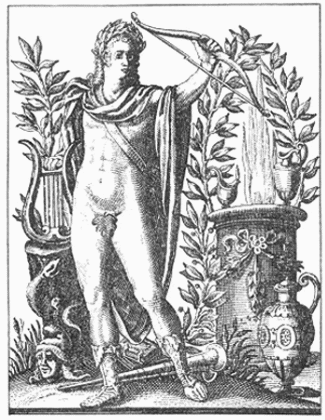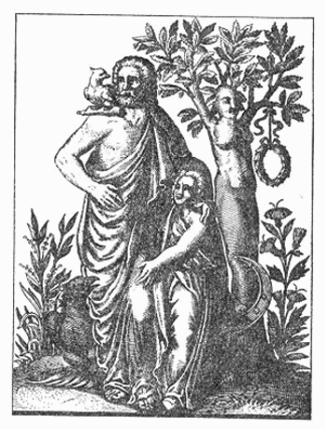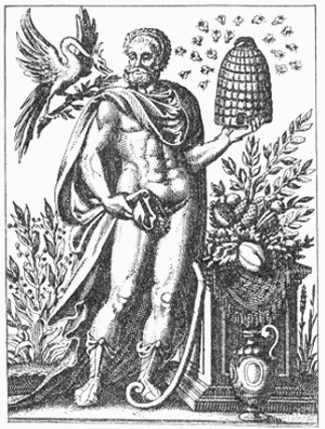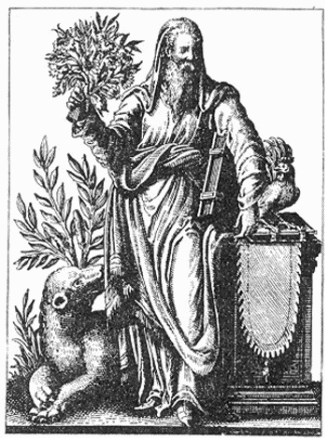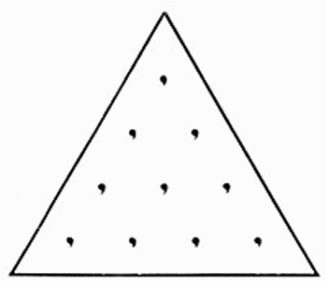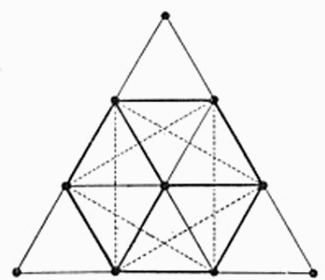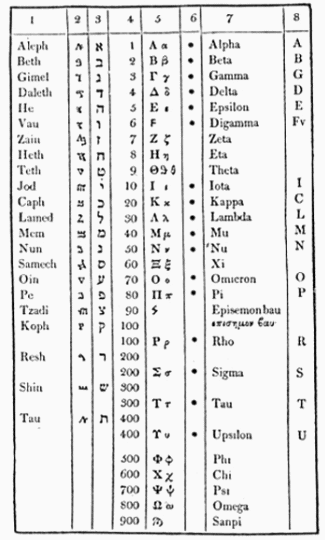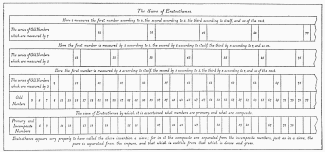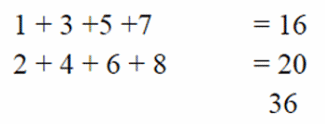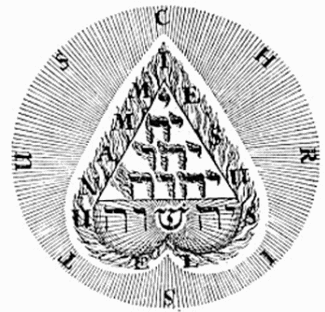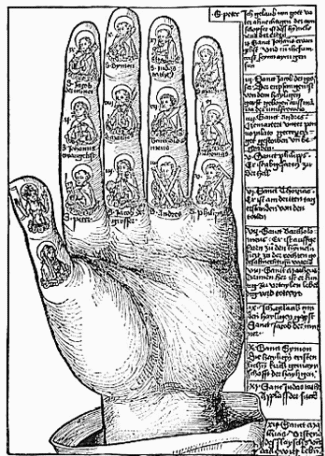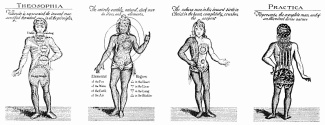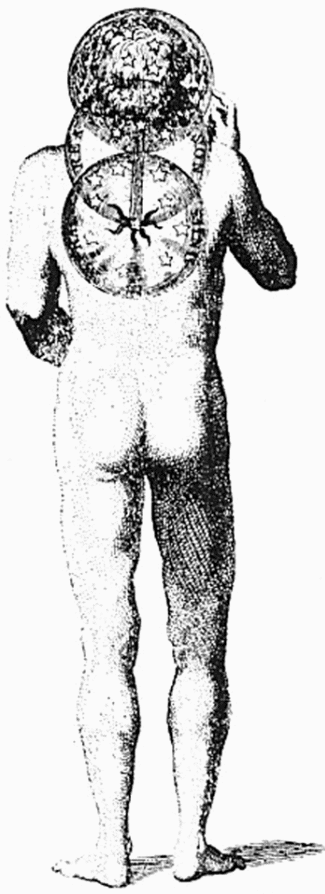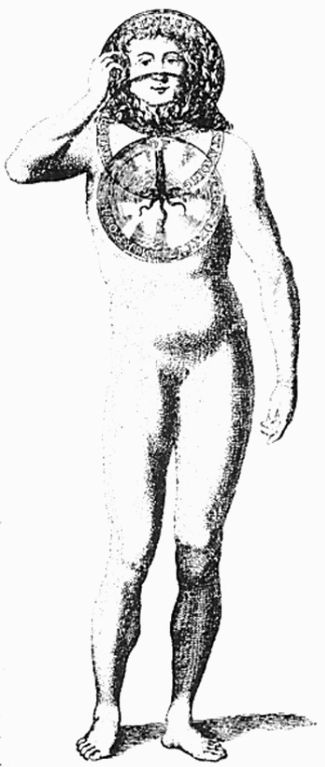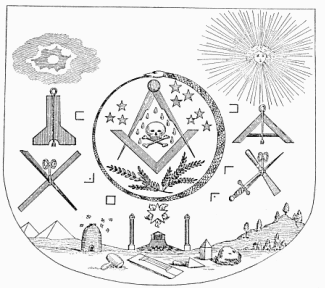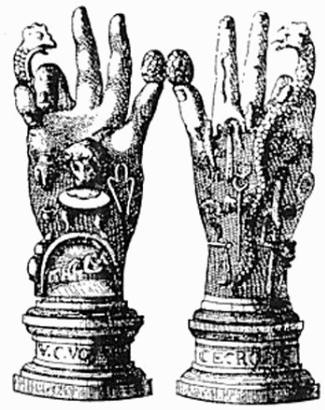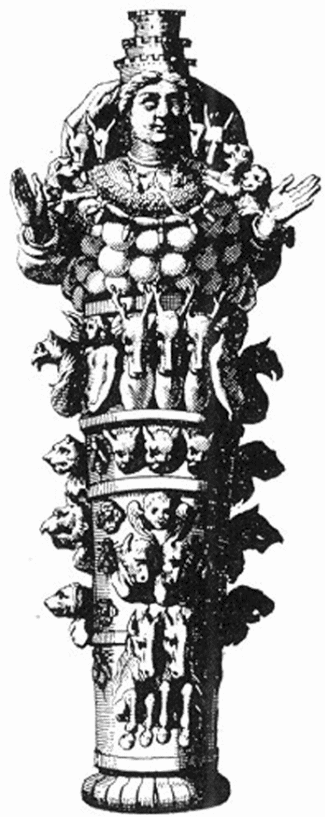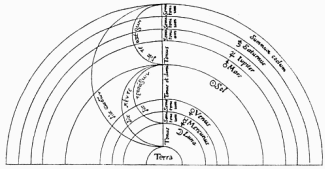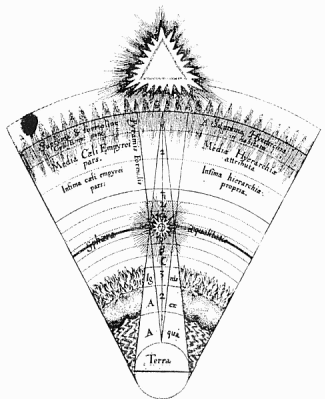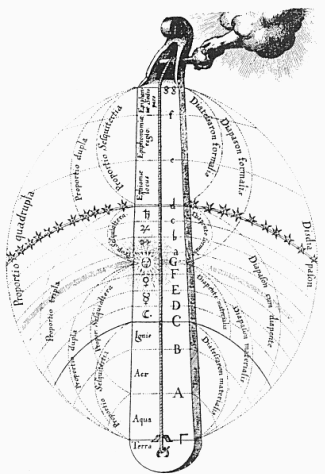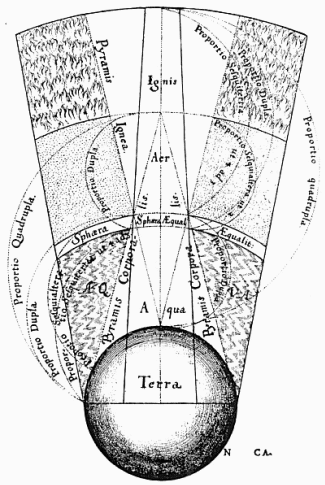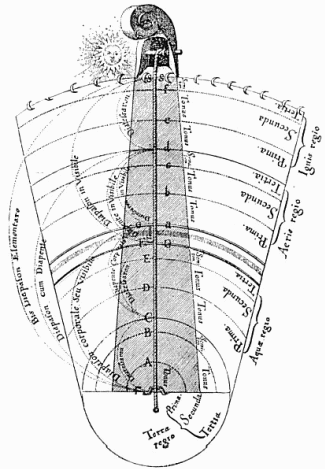IT is especially fitting that a study of Hermetic symbolism should begin with a discussion of the symbols and attributes of the Saitic Isis. This is the Isis of Sais, famous for the inscription concerning her which appeared on the front of her temple in that city: "I, Isis, am all that has been, that is or shall be; no mortal Man hath ever me unveiled."
Plutarch affirms that many ancient authors believed this goddess to be the daughter of Hermes; others held the opinion that she was the child of Prometheus. Both of these demigods were noted for their divine wisdom. It is not improbable that her kinship to them is merely allegorical. Plutarch translates the name Isis to mean wisdom. Godfrey Higgins, in his Anacalypsis, derives the name of Isis from the Hebrew ישע, Iso, and the Greek ζωω, to save. Some authorities, however, for example, Richard Payne Knight (as stated in his Symbolical Language of Ancient Art and Mythology), believe the word to be of Northern extraction, possibly Scandinavian or Gothic. In these languages the name is pronounced Isa, meaning ice, or water in its most passive, crystallized, negative state.
This Egyptian deity under many names appears as the principle of natural fecundity among nearly all the religions of the ancient world. She was known as the goddess with ten thousand appellations and was metamorphosed by Christianity into the Virgin Mary, for Isis, although she gave birth to all living things--chief among them the Sun--still remained a virgin, according to the legendary accounts.
Apuleius in the eleventh book of The Golden Ass ascribes to the goddess the following statement concerning her powers and attributes: "Behold, * *, I, moved by thy prayers, am present with thee; I, who am Nature, the parent of things, the queen of all the elements, the primordial progeny of ages, the supreme of Divinities, the sovereign of the spirits of the dead, the first of the celestials, and the uniform resemblance of Gods and Goddesses. I, who rule by my nod the luminous summits of the heavens, the salubrious breezes of the sea, and the deplorable silences of the realms beneath, and whose one divinity the whole orb of the earth venerates under a manifold form, by different rites and a variety of appellations. Hence the primogenial Phrygians call me Pessinuntica, the mother of the Gods, the Attic Aborigines, Cecropian Minerva; the floating Cyprians, Paphian Venus; the arrow-bearing Cretans, Diana Dictynna; the three-tongued Sicilians, Stygian Proserpine; and the Eleusinians, the ancient Goddess Ceres. Some also call me Juno, others Bellona, others Hecate, and others Rhamnusia. And those who are illuminated by the incipient rays of that divinity the Sun, when he rises, viz. the Ethiopians, the Arii, and the Egyptians skilled in ancient learning, worshipping me by ceremonies perfectly appropriate, call me by my true name, Queen Isis."
Le Plongeon believes that the Egyptian myth of Isis had a historical basis among the Mayas of Central America, where this goddess was known as Queen Moo. In Prince Coh the same author finds a correspondence to Osiris, the brother-husband of Isis. Le Plongeon's theory is that Mayan civilization was far more ancient than that of Egypt. After the death of Prince Coh, his widow, Queen Moo, fleeing to escape the wrath of his murderers, sought refuge among the Mayan colonies in Egypt, where she was accepted as their queen and was given the name of Isis. While Le Plongeon may be right, the possible historical queen sinks into insignificance when compared with the allegorical, symbolic World Virgin; and the fact that she appears among so many different races and peoples discredits the theory that she was a historical individual.
According to Sextus Empyricus, the Trojan war was fought over a statue of the moon goddess. For this lunar Helena, and not for a woman, the Greeks and Trojans struggled at the gates of Troy.
Several authors have attempted to prove that Isis, Osiris, Typhon, Nephthys, and Aroueris (Thoth, or Mercury) were grandchildren of the great Jewish patriarch Noah by his son Ham. But as the story of Noah and his ark is a cosmic allegory concerning the repopulation of planets at the beginning of each world period, this only makes it less likely that they were historical personages. According to Robert Fludd, the sun has three properties--life, light, and heat. These three vivify and vitalize the three worlds--spiritual, intellectual, and material. Therefore, it is said "from one light, three lights," i. e. the first three Master Masons. In all probability, Osiris represents the third, or material, aspect of solar activity, which by its beneficent influences vitalizes and enlivens the flora and fauna of the earth. Osiris is not the sun, but the sun is symbolic of the vital principle of Nature, which the ancients knew as Osiris. His symbol, therefore, was an opened eye, in honor of the Great Eye of the universe, the sun. Opposed to the active, radiant principle of impregnating fire, hear, and motion was the passive, receptive principle of Nature.
Modern science has proved that forms ranging in magnitude from solar systems to atoms are composed of positive, radiant nuclei surrounded by negative bodies that exist upon the emanations of the central life. From this allegory we have the story of Solomon and his wives, for Solomon is the sun and his wives and concubines are the planets, moons, asteroids, and other receptive bodies within his house--the solar mansion. Isis, represented in the Song of Solomon by the dark maid of Jerusalem, is symbolic of receptive Nature--the watery, maternal principle which creates all things out of herself after impregnation has been achieved by the virility of the sun.
In the ancient world the year had 360 days. The five extra days were gathered together by the God of Cosmic Intelligence to serve as the birthdays of the five gods and goddesses who are called the sons and daughters of Ham. Upon the first of these special days Osiris was born and upon the fourth of them Isis. (The number four shows the relation that this goddess bears to the earth and its elements.) Typhon, the Egyptian Demon or Spirit of the Adversary, was born upon the third day. Typhon is often symbolized by a crocodile; sometimes his body is a combination of crocodile and hog. Isis stands for knowledge and wisdom, and according to Plutarch the word Typhon means insolence and pride. Egotism, self-centeredness, and pride are the deadly enemies of understanding and truth. This part of the allegory is revealed.
x
ISIS, QUEEN OF HEAVEN.
From Mosaize Historie der Hebreeuwse Kerke.
Diodorus writes of a famous inscription carved on a column at Nysa, in Arabia, wherein Isis described herself as follows: "I am Isis, Queen of this country. I was instructed by Mercury. No one can destroy the laws which I have established. I am the eldest daughter of Saturn, most ancient of the gods. I am the wife and sister of Osiris the King. I first made known to mortals the use of wheat. I am the mother of Orus the King. In my honor was the city of Bubaste built. Rejoice, O Egypt, rejoice, land that gave me birth!" (See "Morals and Dogma," by Albert Pike.)
After Osiris, here symbolized as the sun, had become King of Egypt and had given to his people the full advantage of his intellectual light, he continued his path through the heavens, visiting the peoples of other nations and converting all with whom he came in contact. Plutarch further asserts that the Greeks recognized in Osiris the same person whom they revered under the names of Dionysos and Bacchus. While he was away from his country, his brother, Typhon, the Evil One, like the Loki of Scandinavia, plotted against the Sun God to destroy him. Gathering seventy-two persons as fellow conspirators, he attained his nefarious end in a most subtle manner. He had a wonderful ornamented box made just the size of the body of Osiris. This he brought into a banquet hall where the gods and goddesses were feasting together. All admired the beautiful chest, and Typhon promised to give it to the one whose body fitted it most perfectly. One after another lay down in the box, but in disappointment rose again, until at last Osiris also tried. The moment he was in the chest Typhon and his accomplices nailed the cover down and sealed the cracks with molten lead. They then cast the box into the Nile, down which it floated to the sea. Plutarch states that the date upon which this occurred was the seventeenth day of the month Athyr, when the sun was in the constellation of Scorpio. This is most significant, for the Scorpion is the symbol of treachery. The time when Osiris entered the chest was also the same season that Noah entered the ark to escape from the Deluge.
Plutarch further declares that the Pans and Satyrs (the Nature spirits and elementals) first discovered that Osiris had been murdered. These immediately raised an alarm, and from this incident the word panic, meaning fright or amazement of the multitudes, originated. Isis, upon receiving the news of her husband's murder, which she learned from some children who had seen the murderers making off with the box, at once robed herself in mourning and started forth in quest of him.
At length Isis discovered that the chest had floated to the coast of Byblos. There it had lodged in the branches of a tree, which in a short time miraculously grew up around the box. This so amazed the king of that country that he ordered the tree to be cut down and a pillar made from its trunk to support the roof of his palace. Isis, visiting Byblos, recovered the body of her husband, but it was again stolen by Typhon, who cut it into fourteen parts, which he scattered all over the earth. Isis, in despair, began gathering up the severed remains of her husband, but found only thirteen pieces. The fourteenth part (the phallus) she reproduced in gold, for the original had fallen into the river Nile and had been swallowed by a fish.
Typhon was later slain in battle by the son of Osiris. Some of the Egyptians believed that the souls of the gods were taken to heaven, where they shone forth as stars. It was supposed that the soul of Isis gleamed from the Dog Star, while Typhon became the constellation of the Bear. It is doubtful, however, whether this idea was ever generally accepted.
Among the Egyptians, Isis is often represented with a headdress consisting of the empty throne chair of her murdered husband, and this peculiar structure was accepted during certain dynasties as her hieroglyphic. The headdresses of the Egyptians have great symbolic and emblematic importance, for they represent the auric bodies of the superhuman intelligences, and are used in the same way that the nimbus, halo, and aureole are used in Christian religious art. Frank C. Higgins, a well-known Masonic symbolist, has astutely noted that the ornate headgears of certain gods and Pharaohs are inclined backward at the same angle as the earth's axis. The robes, insignia, jewels, and ornamentations of the ancient hierophants symbolized the spiritual energies radiating from the human body. Modern science is rediscovering many of the lost secrets of Hermetic philosophy. One of these is the ability to gauge the mental development, the soul qualities, and the physical health of an individual from the streamers of semi-visible electric force which pour through the surface of the skin of every human being at all times during his life. (For details concerning a scientific process for making the auric emanations visible, see The Human Atmosphere by Dr. Walter J. Kilner.)
Isis is sometimes symbolized by the head of a cow; occasionally the entire animal is her symbol. The first gods of the Scandinavians were licked out of blocks of ice by the Mother Cow (Audhumla), who symbolized the principle of natural nutriment and fecundity because of her milk. Occasionally Isis is represented as a bird. She often carries in one hand the crux ansata, the symbol of eternal life, and in the other the flowered scepter, symbolic of her authority.
Thoth Hermes Trismegistus, the founder of Egyptian learning, the Wise Man of the ancient world, gave to the priests and philosophers of antiquity the secrets which have been preserved to this day in myth and legend. These allegories and emblematic figures conceal the secret formulæ for spiritual, mental, moral, and physical regeneration commonly known as the Mystic Chemistry of the Soul (alchemy). These sublime truths were communicated to the initiates of the Mystery Schools, but were concealed from the profane. The latter, unable to understand the abstract philosophical tenets, worshiped the concrete sculptured idols which were emblematic of these secret truths. The wisdom and secrecy of Egypt are epitomized in the Sphinx, which has preserved its secret from the seekers of a hundred generations. The mysteries of Hermeticism, the great spiritual truths hidden from the world by the ignorance of the world, and the keys of the secret doctrines of the ancient philosophers, are all symbolized by the Virgin Isis. Veiled from head to foot, she reveals her wisdom only to the tried and initiated few who have earned the right to enter her sacred presence, tear from the veiled figure of Nature its shroud of obscurity, and stand face to face with the Divine Reality.
The explanations in these pages of the symbols peculiar to the Virgin Isis are based (unless otherwise noted) on selections from a free translation of the fourth book of Bibliotèque des Philosophes Hermétiques, entitled "The Hermetical Signification of the Symbols and Attributes of Isis," with interpolations by the compiler to amplify and clarify the text.
The statues of Isis were decorated with the sun, moon, and stars, and many emblems pertaining to the earth, over which Isis was believed to rule (as the guardian spirit of Nature personified). Several images of the goddess have been found upon which the marks of her dignity and position were still intact. According to the ancient philosophers, she personified Universal Nature, the mother of all productions. The deity was generally represented as a partly nude woman, often pregnant, sometimes loosely covered with a garment either of green or black color, or of four different shades intermingled-black, white, yellow, and red.
Apuleius describes her as follows: "In the first place, then, her most copious and long hairs, being gradually intorted, and promiscuously scattered on her divine neck, were softly defluous. A multiform crown, consisting of various flowers, bound the sublime summit of her head. And in the middle of the crown, just on her forehead, there was a smooth orb resembling a mirror, or rather a white refulgent light, which indicated that she was the moon. Vipers rising up after the manner of furrows, environed the crown on the right hand and on the left, and Cerealian ears of corn were also extended from above. Her garment was of many colours, and woven from the finest flax, and was at one time lucid with a white splendour, at another yellow from the flower of crocus, and at another flaming with a rosy redness. But that which most excessively dazzled my sight, was a very black robe, fulgid with a dark splendour, and which, spreading round and passing under her right side, and ascending to her left shoulder, there rose protuberant like the center of a shield, the dependent part of the robe falling in many folds, and having small knots of fringe, gracefully flowing in its extremities. Glittering stars were dispersed through the embroidered border of the robe, and through the whole of its surface: and the full moon, shining in the middle of the stars, breathed forth flaming fires. Nevertheless, a crown, wholly consisting of flowers and fruits of every kind, adhered with indivisible connexion to the border of that conspicuous robe, in all its undulating motions. What she carried in her hands also consisted of things of a very different nature. For her right hand, indeed, bore a brazen rattle [sistrum] through the narrow lamina of which bent like a belt, certain rods passing, produced a sharp triple sound, through the vibrating motion of her arm. An oblong vessel, in the shape of a boat, depended from her left hand, on the handle of which, in that part in which it was conspicuous, an asp raised its erect head and largely swelling neck. And shoes woven from the leaves of the victorious palm tree covered her immortal feet."
The green color alludes to the vegetation which covers the face of the earth, and therefore represents the robe of Nature. The black represents death and corruption as being the way to a new life and generation. "Except a man be born again, he cannot see the kingdom of God." (John iii. 3.) White, yellow, and red signify the three principal colors of the alchemical, Hermetical, universal medicine after the blackness of its putrefaction is over.
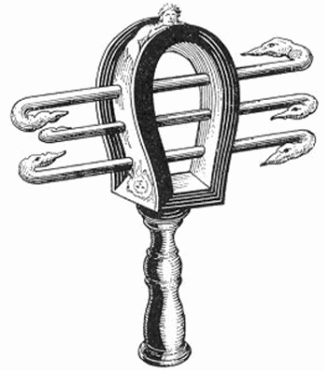
THE SISTRUM.
"The sistrum is designed * * * to represent to us, that every thing must be kept in continual agitation, and never cease from motion; that they ought to be mused and well-shaken, whenever they begin to grow drowsy as it were, and to droop in their motion. For, say they, the sound of these sistra averts and drives away Typho; meaning hereby, that as corruption clogs and puts a stop to the regular course of nature; so generation, by the means of motion, loosens it again, and restores it to its former vigour. Now the outer surface of this instrument is of a convex figure, as within its circumference are contained those four chords or bars [only three shown], which make such a rattling when they are shaken--nor is this without its meaning; for that part of the universe which is subject to generation and corruption is contained within the sphere of the moon; and whatever motions or changes may happen therein, they are all effected by the different combinations of the four elementary bodies, fire, earth, water, and air--moreover, upon the upper part of the convex surface of the sistrum is carved the effigies of a cat with a human visage, as on the lower edge of it, under those moving chords, is engraved on the one side the face of Isis, and on the other that of Nephthys--by the faces symbolically representing generation and corruption (which, as has been already observed, is nothing but the motion and alteration of the four elements one amongst another)," (From Plutarch's Isis and Osiris.)
The ancients gave the name Isis to one of their occult medicines; therefore the description here given relates somewhat to chemistry. Her black drape also signifies that the moon, or the lunar humidity--the sophic universal mercury and the operating substance of Nature in alchemical terminology--has no light of its own, but receives its light, its fire, and its vitalizing force from the sun. Isis was the image or representative of the Great Works of the wise men: the Philosopher's Stone, the Elixir of Life, and the Universal Medicine.
Other hieroglyphics seen in connection with Isis are no less curious than those already described, but it is impossible to enumerate all, for many symbols were used interchangeably by the Egyptian Hermetists. The goddess often wore upon her head a hat made of cypress branches, to signify mourning for her dead husband and also for the physical death which she caused every creature to undergo in order to receive a new life in posterity or a periodic resurrection. The head of Isis is sometimes ornamented with a crown of gold or a garland of olive leaves, as conspicuous marks of her sovereignty as queen of the world and mistress of the entire universe. The crown of gold signifies also the aurific unctuosity or sulphurous fatness of the solar and vital fires which she dispenses to every individual by a continual circulation of the elements, this circulation being symbolized by the musical rattle which she carries in her hand. This sistrum is also the yonic symbol of purity.
A serpent interwoven among the olive leaves on her head, devouring its own tail, denotes that the aurific unctuosity was soiled with the venom of terrestrial corruption which surrounded it and must be mortified and purified by seven planetary circulations or purifications called flying eagles (alchemical terminology) in order to make it medicinal for the restoration of health. (Here the emanations from the sun are recognized as a medicine for the healing of human ills.) The seven planetary circulations are represented by the circumambulations of the Masonic lodge; by the marching of the Jewish priests seven times around the walls of Jericho, and of the Mohammedan priests seven times around the Kabba at Mecca. From the crown of gold project three horns of plenty, signifying the abundance of the gifts of Nature proceeding from one root having its origin in the heavens (head of Isis).
In this figure the pagan naturalists represent all the vital powers of the three kingdoms and families of sublunary nature-mineral, plant, and animal (man considered as an animal). At one of her ears was the moon and at the other the sun, to indicate that these two were the agent and patient, or father and mother principles of all natural objects; and that Isis, or Nature, makes use of these two luminaries to communicate her powers to the whole empire of animals, vegetables, and minerals. On the back of her neck were the characters of the planets and the signs of the zodiac which assisted the planets in their functions. This signified that the heavenly influences directed the destinies of the principles and sperms of all things, because they were the governors of all sublunary bodies, which they transformed into little worlds made in the image of the greater universe.
Isis holds in her right hand a small sailing ship with the spindle of a spinning wheel for its mast. From the top of the mast projects a water jug, its handle shaped like a serpent swelled with venom. This indicates that Isis steers the bark of life, full of troubles and miseries, on the stormy ocean of Time. The spindle symbolizes the fact that she spins and cuts the thread of Life. These emblems further signify that Isis abounds in humidity, by means of which she nourishes all natural bodies, preserving them from the heat of the sun by humidifying them with nutritious moisture from the atmosphere. Moisture supports vegetation, but this subtle humidity (life ether) is always more or less infected by some venom proceeding from corruption or decay. It must be purified by being brought into contact with the invisible cleansing fire of Nature. This fire digests, perfects, and revitalizes this substance, in order that the humidity may become a universal medicine to heal and renew all the bodies in Nature.
The serpent throws off its skin annually and is thereby renewed (symbolic of the resurrection of the spiritual life from the material nature). This renewal of the earth takes place every spring, when the vivifying spirit of the sun returns to the countries of the Northern Hemisphere.
The symbolic Virgin carries in her left hand a sistrum and a cymbal, or square frame of metal, which when struck gives the key-note of Nature (Fa); sometimes also an olive branch, to indicate the harmony she preserves among natural things with her regenerating power. By the processes of death and corruption she gives life to a number of creatures of diverse forms through periods of perpetual change. The cymbal is made square instead of the usual triangular shape in order to symbolize that all things are transmuted and regenerated according to the harmony of the four elements.
Dr. Sigismund Bacstrom believed that if a physician could establish harmony among the elements of earth, fire, air, and water, and unite them into a stone (the Philosopher's Stone) symbolized by the six-pointed star or two interlaced triangles, he would possess the means of healing all disease. Dr. Bacstrom further stated that there was no doubt in his mind that the universal, omnipresent fire (spirit) of Nature: "does all and is all in all." By attraction, repulsion, motion, heat, sublimation, evaporation, exsiccation, inspissation, coagulation, and fixation, the Universal Fire (Spirit) manipulates matter, and manifests throughout creation. Any individual who can understand these principles and adapt them to the three departments of Nature becomes a true philosopher.
From the right breast of Isis protruded a bunch of grapes and from, the left an ear of corn or a sheaf of wheat, golden in color. These indicate that Nature is the source of nutrition for plant, animal, and human life, nourishing all things from herself. The golden color in the wheat (corn) indicates that in the sunlight or spiritual gold is concealed the first sperm of all life.
On the girdle surrounding the upper part of the body of the statue appear a number of mysterious emblems. The girdle is joined together in front by four golden plates (the elements), placed in the form of a square. This signified that Isis, or Nature, the first matter (alchemical terminology), was the essence- of the four elements (life, light, heat, and force), which quintessence generated all things. Numerous stars are represented on this girdle, thereby indicating their influence in darkness as well as the influence of the sun in light. Isis is the Virgin immortalized in the constellation of Virgo, where the World Mother is placed with the serpent under her feet and a crown. of stars on her head. In her arms she carries a sheaf of grain and sometimes the young Sun God.
The statue of Isis was placed on a pedestal of dark stone ornamented with rams' heads. Her feet trod upon a number of venomous reptiles. This indicates that Nature has power to free from acidity or saltness all corrosives and to overcome all impurities from terrestrial corruption adhering to bodies. The rams' heads indicate that the most auspicious time for the generation of life is during the period when the sun passes through the sign of Aries. The serpents under her feet indicate that Nature is inclined to preserve life and to heal disease by expelling impurities and corruption.
In this sense the axioms known to the ancient philosophers are verified; namely:
Nature contains Nature,
Nature rejoices in her own nature,
Nature surmounts Nature;
Nature cannot be amended but in her own nature.
Therefore, in contemplating the statue of Isis, we must not lose sight of the occult sense of its allegories; otherwise, the Virgin remains an inexplicable enigma.
From a golden ring on her left arm a line descends, to the end of which is suspended a deep box filled with flaming coals and incense. Isis, or Nature personified, carries with her the sacred fire, religiously preserved and kept burning in. a special temple by the vestal virgins. This fire is the genuine, immortal flame of Nature--ethereal, essential, the author of life. The inconsumable oil; the balsam of life, so much praised by the wise and so often referred to in the Scriptures, is frequently symbolized as the fuel of this immortal flame.
From the right arm of the figure also descends a thread, to the end of which is fastened a pair of scales, to denote the exactitude of Nature in her weights and measures. Isis is often represented as the symbol of justice, because Nature is eternally consistent.
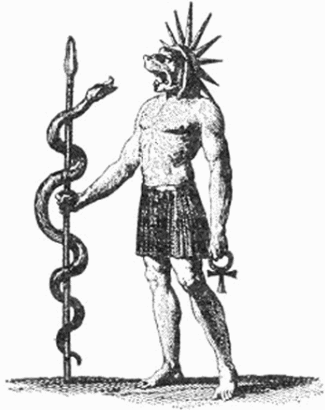
THOTH, THE DOG-HEADED.
From Lenoir's La Franche-Maconnerie.
Aroueris, or Thoth, one of the five immortals, protected the infant Horus from the wrath of Typhon after the murder of Osiris. He also revised the ancient Egyptian calendar by increasing the year from 360 days to 365. Thoth Hermes was called "The Dog-Headed" because of his faithfulness and integrity. He is shown crowned with a solar nimbus, carrying in one hand the Crux Ansata, the symbol of eternal life, and in the other a serpent-wound staff symbolic of his dignity as counselor of the gods.
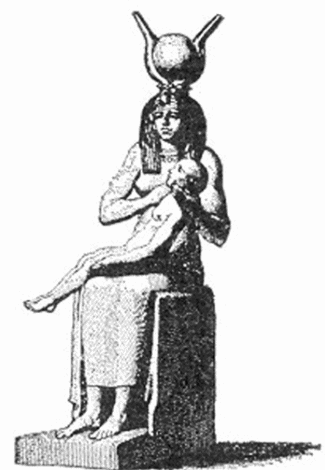
THE EGYPTIAN MADONNA.
From Lenoir's La Franche-Maconnerie.
Isis is shown with her son Horus in her arms. She is crowned with the lunar orb, ornamented with the horns of rams or bulls. Orus, or Horus as he is more generally known, was the son of Isis and Osiris. He was the god of time, hours, days, and this narrow span of life recognized as mortal existence. In all probability, the four sons of Horus represent the four kingdoms of Nature. It was Horus who finally avenged the murder of his father, Osiris, by slaying Typhon, the spirit of Evil.
The World Virgin is sometimes shown standing between two great pillars--the Jachin and Boaz of Freemasonry--symbolizing the fact that Nature attains productivity by means of polarity. As wisdom personified, Isis stands between the pillars of opposites, demonstrating that understanding is always found at the point of equilibrium and that truth is often crucified between the two thieves of apparent contradiction.
The sheen of gold in her dark hair indicates that while she is lunar, her power is due to the sun's rays, from which she secures her ruddy complexion. As the moon is robed in the reflected light of the sun, so Isis, like the virgin of Revelation, is clothed in the glory of solar luminosity. Apuleius states that while he was sleeping he beheld the venerable goddess Isis rising out of the ocean. The ancients realized that the primary forms of life first came out of water, and modem science concurs in this view. H. G. Wells, in his Outline of History, describing primitive life on the earth, states: "But though the ocean and intertidal water already swarmed with life, the land above the high-tide line was still, so far as we can guess, a stony wilderness without a trace of life." In the next chapter he adds: "Wherever the shore-line ran there was life, and that life went on in and by and with water as its home, its medium, and its fundamental necessity." The ancients believed that the universal sperm proceeded from warm vapor, humid but fiery. The veiled Isis, whose very coverings represent vapor, is symbolic of this humidity, which is the carrier or vehicle for the sperm life of the sun, represented by a child in her arms. Because the sun, moon, and stars in setting appear to sink into the sea and also because the water receives their rays into itself, the sea was believed to be the breeding ground for the sperm of living things. This sperm is generated from the combination of the influences of the celestial bodies; hence Isis is sometimes represented as pregnant.
Frequently the statue of Isis was accompanied by the figure of a large black and white ox. The ox represents either Osiris as Taurus, the bull of the zodiac, or Apis, an animal sacred to Osiris because of its peculiar markings and colorings. Among the Egyptians, the bull was a beast of burden. Hence the presence of the animal was a reminder of the labors patiently performed by Nature that all creatures may have life and health. Harpocrates, the God of Silence, holding his fingers to his mouth, often accompanies the statue of Isis. He warns all to keep the secrets of the wise from those unfit to know them.
The Druids of Britain and Gaul had a deep knowledge concerning the mysteries of Isis and worshiped her under the symbol of the moon. Godfrey Higgins considers it a mistake to regard Isis as synonymous with the moon. The moon was chosen for Isis because of its dominion over water. The Druids considered the sun to be the father and the moon the mother of all things. By means of these symbols they worshiped Universal Nature.
The figure of Isis is sometimes used to represent the occult and magical arts, such as necromancy, invocation, sorcery, and thaumaturgy. In one of the myths concerning her, Isis is said to have conjured the invincible God of Eternities, Ra, to tell her his secret and sacred name, which he did. This name is equivalent to the Lost Word of Masonry. By means of this Word, a magician can demand obedience from the invisible and superior deities. The priests of Isis became adepts in the use of the unseen forces of Nature. They understood hypnotism, mesmerism, and similar practices long before the modem world dreamed of their existence.
Plutarch describes the requisites of a follower of Isis in this manner: "For as 'tis not the length of the beard, or the coarseness of the habit which makes a philosopher, so neither will those frequent shavings, or the mere wearing [of] a linen vestment constitute a votary of Isis; but he alone is a true servant or follower of this Goddess, who after he has heard, and been made acquainted in a proper manner with the history of the actions of these Gods, searches into the hidden truths which he concealed under them, and examines the whole by the dictates of reason and philosophy."
During the Middle Ages the troubadours of Central Europe preserved in song the legends of this Egyptian goddess. They composed sonnets to the most beautiful woman in all the world. Though few ever discovered her identity, she was Sophia, the Virgin of Wisdom, whom all the philosophers of the world have wooed. Isis represents the mystery of motherhood, which the ancients recognized as the most apparent proof of Nature's omniscient wisdom and God's overshadowing power. To the modern seeker she is the epitome of the Great Unknown, and only those who unveil her will be able to solve the mysteries of life, death, generation, and regeneration.
MUMMIFICATION OF THE EGYPTIAN DEAD
Servius, commenting on Virgil's Æneid, observes that "the wise Egyptians took care to embalm their bodies, and deposit them in catacombs, in order that the soul might be preserved for a long time in connection with the body, and might not soon be alienated; while the Romans, with an opposite design, committed the remains of their dead to the funeral pile, intending that the vital spark might immediately be restored to the general element, or return to its pristine nature." (From Prichard's An Analysis of the Egyptian Mythology.)
No complete records are available which give the secret doctrine of the Egyptians concerning the relationship existing between the spirit, or consciousness, and the body which it inhabited. It is reasonably certain, however, that Pythagoras, who had been initiated in the Egyptian temples, when he promulgated the doctrine of metempsychosis, restated, in part at least, the teachings of the Egyptian initiates. The popular supposition that the Egyptians mummified their dead in order to preserve the form for a physical resurrection is untenable in the light of modern knowledge regarding their philosophy of death. In the fourth book of On Abstinence from Animal Food, Porphyry describes an Egyptian custom of purifying the dead by removing the contents of the abdominal cavity, which they placed in a separate chest. He then reproduces the following oration which had been translated out of the Egyptian tongue by Euphantus: "O sovereign Sun, and all ye Gods who impart life to men, receive me, and deliver me to the eternal Gods as a cohabitant. For I have always piously worshipped those divinities which were pointed out to me by my parents as long as I lived in this age, and have likewise always honored those who procreated my body. And, with respect to other men, I have never slain any one, nor defrauded any one of what he deposited with me, nor have I committed any other atrocious deed. If, therefore, during my life I have acted erroneously, by eating or drinking things which it is unlawful to cat or drink, I have not erred through myself, but through these" (pointing to the chest which contained the viscera). The removal of the organs identified as the seat of the appetites was considered equivalent to the purification of the body from their evil influences.
So literally did the early Christians interpret their Scriptures that they preserved the bodies of their dead by pickling them in salt water, so that on the day of resurrection the spirit of the dead might reenter a complete and perfectly preserved body. Believing that the incisions necessary to the embalming process and the removal of the internal organs would prevent the return of the spirit to its body, the Christians buried their dead without resorting to the more elaborate mummification methods employed by the Egyptian morticians.
In his work on Egyptian Magic, S.S.D.D. hazards the following speculation concerning the esoteric purposes behind the practice of mummification. "There is every reason to suppose," he says, "that only those who had received some grade of initiation were mummified; for it is certain that, in the eyes of the Egyptians, mummification effectually prevented reincarnation. Reincarnation was necessary to imperfect souls, to those who had failed to pass the tests of initiation; but for those who had the Will and the capacity to enter the Secret Adytum, there was seldom necessity for that liberation of the soul which is said to be effected by the destruction of the body. The body of the Initiate was therefore preserved after death as a species of Talisman or material basis for the manifestation of the Soul upon earth."
During the period of its inception mummification was limited to the Pharaoh and such other persons of royal rank as presumably partook of the attributes of the great Osiris, the divine, mummified King of the Egyptian Underworld.
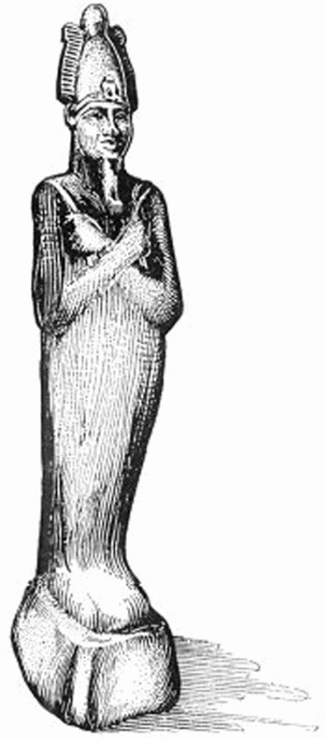
OSIRIS, KING OF THE UNDERWORLD.
Osiris is often represented with the lower par, of his body enclosed in a mummy case or wrapped about with funeral bandages. Man's spirit consists of three distinct parts, only one of which incarnates in physical form. The human body was considered to be a tomb or sepulcher of this incarnating spirit. Therefore Osiris, a symbol of the incarnating ego, was represented with the lower half of his body mummified to indicate that he was the living spirit of man enclosed within the material form symbolized by the mummy case.
There is a romance between the active principle of God and the passive principle of Nature. From the union of these two principles is produced the rational creation. Man is a composite creature. From his Father (the active principle) he inherits his Divine Spirit, the fire of aspiration--that immortal part of himself which rises triumphant from the broken clay of mortality: that part which remains after the natural organisms have disintegrated or have been regenerated. From his Mother (the passive principle) he inherits his body--that part over which the laws of Nature have control: his humanity, his mortal personality, his appetites, his feelings, and his emotions. The Egyptians also believed that Osiris was the river Nile and that Isis (his sister-wife) was the contiguous land, which, when inundated by the river, bore fruit and harvest. The murky water of the Nile were believed to account for the blackness of Osiris, who was generally symbolized as being of ebony hue.

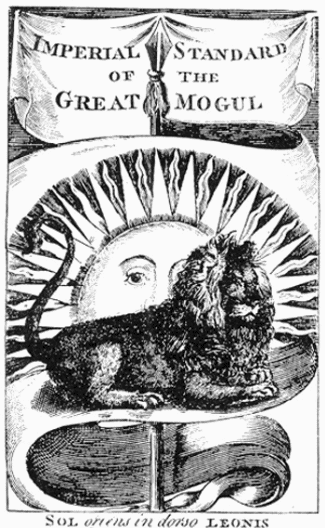

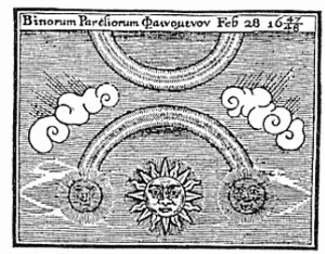
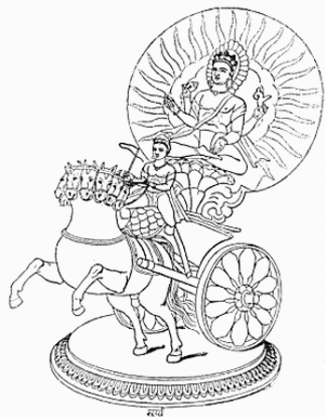
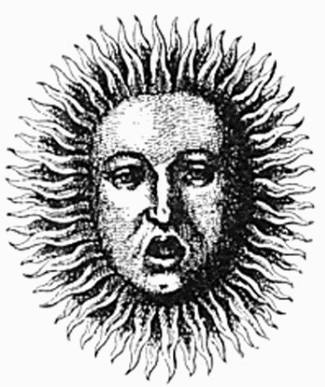
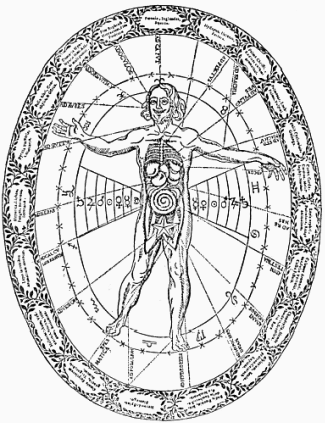
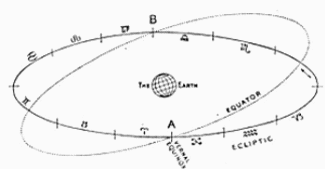

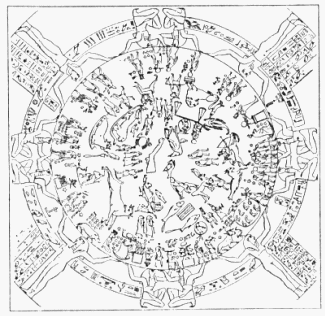
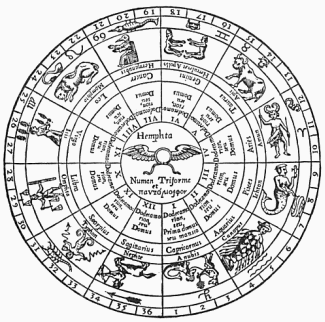
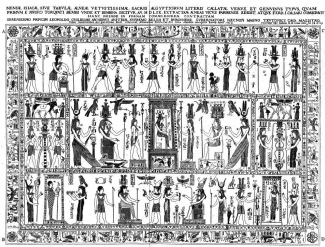
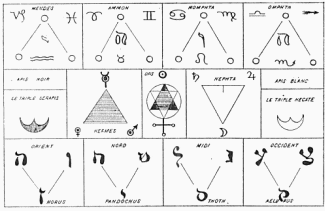
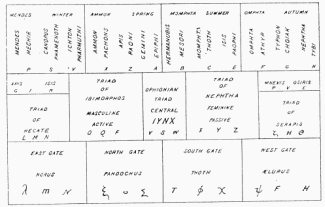
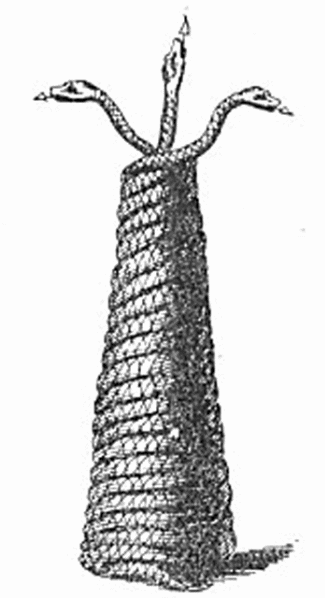
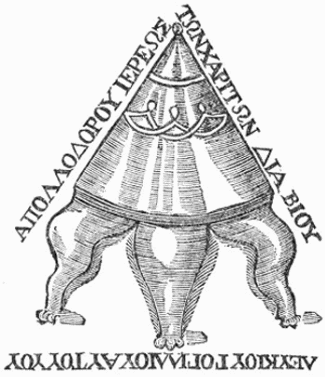
 iv.; sublime them into flowers to
iv.; sublime them into flowers to 